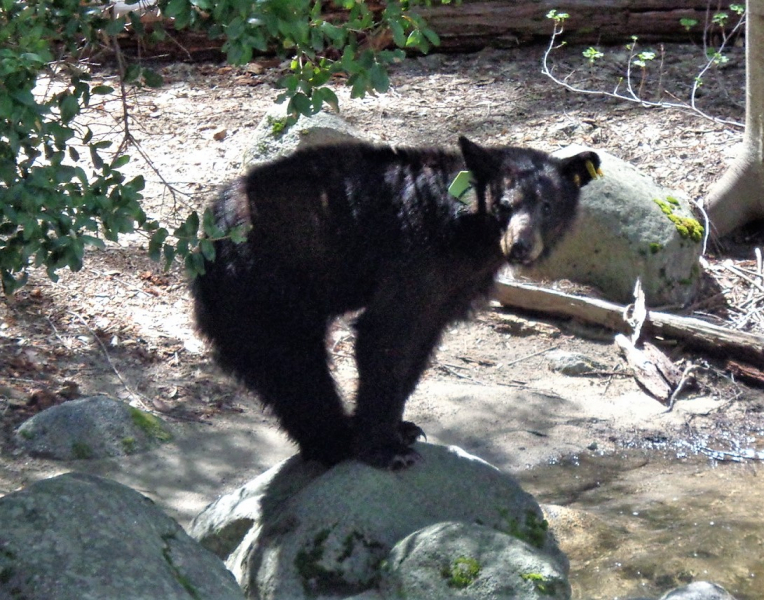 Yosemite provides a home for as many as 500 bears. They’re all American black bears (Ursus americanus), but don’t be fooled by the name: Many are brown or even blond in color, like the one pictured above (photo by Bob Roney). You might be tempted to think that the lighter-hued ones are brown bears, but that moniker refers to Ursus arctos, a species that includes grizzly bears, which have been extinct from California for nearly a century.
Yosemite provides a home for as many as 500 bears. They’re all American black bears (Ursus americanus), but don’t be fooled by the name: Many are brown or even blond in color, like the one pictured above (photo by Bob Roney). You might be tempted to think that the lighter-hued ones are brown bears, but that moniker refers to Ursus arctos, a species that includes grizzly bears, which have been extinct from California for nearly a century.
Yosemite’s black bears forage for berries and grasses in the spring and summer, bulk up on acorns and other seasonal foods in the fall (consuming up to 20,000 calories per day), and spend much of the winter hibernating in hollow trees or rock caves.
As they wander about their Sierra home, bears might cross paths with a variety of animal species: deer and bobcats, songbirds and salamanders … and humans. Seeing a bear in the wild can be an incredible experience, but it’s important to remember that human actions can have a serious impact on these curious, omnivorous mammals. Human food can draw bears to campgrounds and parking areas, and cars can strike bears on park roads. In 2018, at least 16 bears were hit by vehicles in Yosemite.
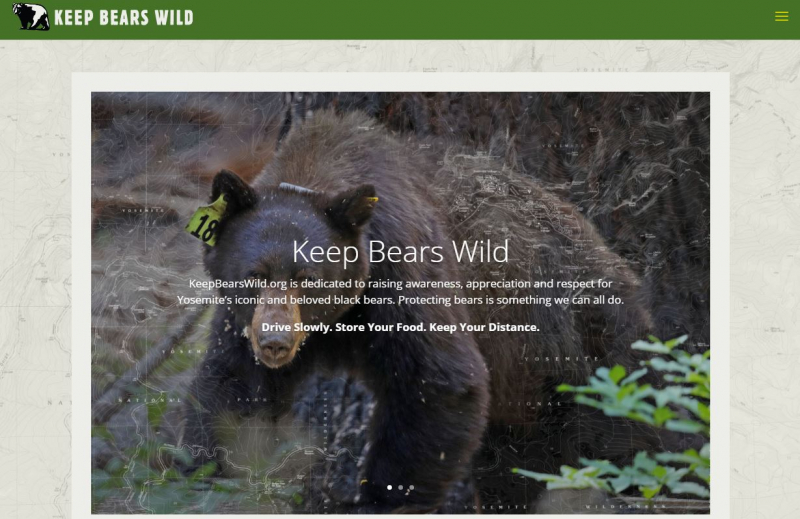 Over the past two decades, our donors have supported more than $1.2 million in grants to help the park protect bears and reduce human-bear encounters. That funding has supported a variety of wildlife management tools and educational resources, including the Keep Bears Wild website. The site offers steps that every visitor can take to help protect bears and other animals — drive slowly (stick to the speed limit); store your food (in designated containers); keep your distance (in the backcountry) or scare bears away (in developed areas) — and highlights work that our donors and team make possible.
Over the past two decades, our donors have supported more than $1.2 million in grants to help the park protect bears and reduce human-bear encounters. That funding has supported a variety of wildlife management tools and educational resources, including the Keep Bears Wild website. The site offers steps that every visitor can take to help protect bears and other animals — drive slowly (stick to the speed limit); store your food (in designated containers); keep your distance (in the backcountry) or scare bears away (in developed areas) — and highlights work that our donors and team make possible.
Bear tracking: In 2012, our donors supported a grant to upgrade and expand Yosemite’s electronic bear-monitoring systems, which alert wildlife managers when tagged bears enter specific developed areas. More recently, funding for GPS collars, including three small models for a trio of orphaned cubs, has allowed managers to track bears in real time.
Why track bears? By monitoring the mammals’ movements, wildlife managers can learn more about their range and habits – and can intervene if a bear is wandering close to a campground. The new Keep Bears Wild Bear Tracker map uses time-delayed GPS data to give the public a better sense of how bears move about the park, and to identify locations of past vehicle collisions.
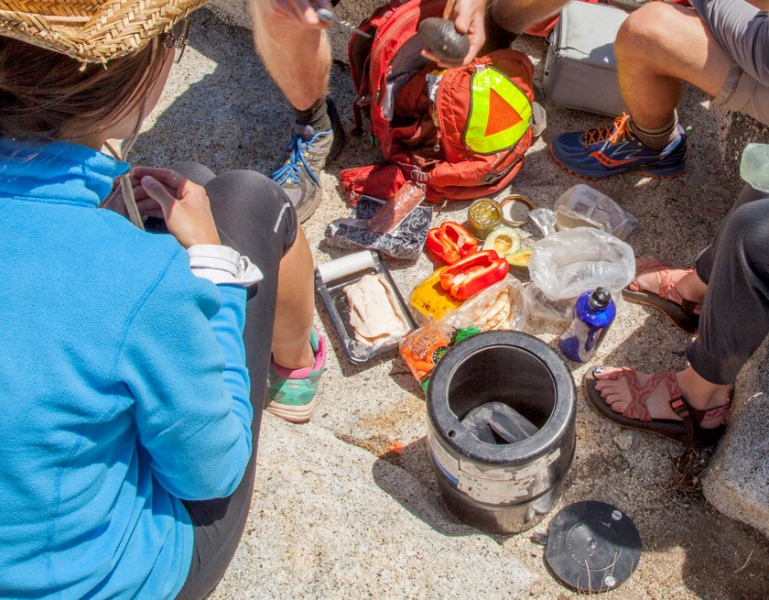 Food storage: Wondering where to stash your snacks while you’re in Yosemite? If you’re day-hiking or camping, look for a brown metal box with a latch (the park has installed bear-proof lockers, including more than 2,000 funded by our donors, at parking lots and campgrounds throughout the park). If you’re backpacking, head to a Wilderness Center to rent a bear-proof canister from our team.
Food storage: Wondering where to stash your snacks while you’re in Yosemite? If you’re day-hiking or camping, look for a brown metal box with a latch (the park has installed bear-proof lockers, including more than 2,000 funded by our donors, at parking lots and campgrounds throughout the park). If you’re backpacking, head to a Wilderness Center to rent a bear-proof canister from our team.
Why bother? Bears are quick learners, opportunistic, and equipped with a powerful sense of smell. Food left in vehicles or in the open makes for an easy meal, even if it requires popping out a car window or pulling a bag from a tree branch. Using proper equipment to store food and other scented items, such as toothpaste and deodorant, helps deter bears from seeking sustenance in developed areas.
From low-tech food canisters to high-tech GPS collars, these tools have helped spur a decline in human-bear encounters in Yosemite: The bear team recorded 22 incidents in 2018, down from a one-year high of 1,584 in 1998.
With your help, that number can continue to drop. Explore the resources on Keep Bears Wild. Learn the key steps for protecting wildlife (and yourself), and help educate your family and friends. Get inspired to support wildlife management in the park. If you see a bear, report the sighting – and let yourself observe in awe and appreciation (from a safe distance, of course).

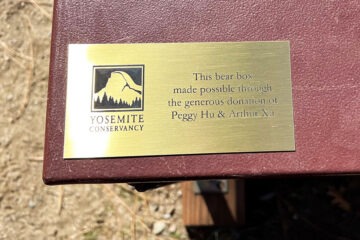
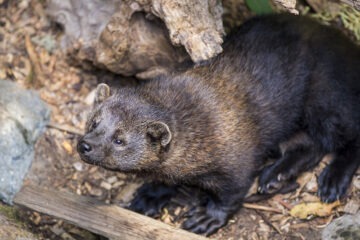
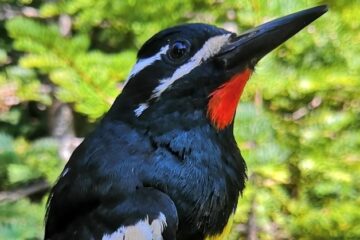
1 thought on “Protecting Yosemite’s Bears”
Comments are closed.